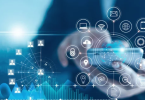Looking more forward in technology is wide more impressive and encouragement and wide more reliable in now life and now days trending stories therefore it may including human effort easier than usage of machines
This is why many organisation prefer using technology in their companies example in port and dry port they most using machine in lifting their heavy light goods like containers and goods thats are easier to breakdown when lifted
In this matter now why can say that it had including many things be clear and definable to people and other consequences lets push it together as a word and making changes to upcoming generations and more coming seasons here and after some years ahead.
In today’s hyperconnected digital era, cybersecurity has become as essential as locking your front door. By 2025, our reliance on connected technologies—from smart homes and autonomous cars to AI-driven workplaces and digital healthcare—will only intensify. While these innovations bring unprecedented convenience, they also open the door to new and sophisticated cyber threats.
This article explores the state of cybersecurity in 2025, the emerging threats you need to watch for, and the best strategies to stay safe in a world where everything is connected.
1. Why Cybersecurity Matters More Than Ever
The digital transformation of businesses, governments, and personal lives has made data the most valuable commodity of the modern age. Unfortunately, this has also made cybercrime one of the fastest-growing global risks.
- Cost of cybercrime: Experts predict the global cost of cybercrime could surpass $10 trillion annually by 2025.
- Rising attack frequency: A ransomware attack occurs every few seconds worldwide.
- Expanding digital surface: With billions of IoT devices, cloud systems, and AI applications, hackers have more entry points than ever.
In short, cybersecurity in 2025 isn’t optional—it’s survival.
2. The Biggest Cybersecurity Threats in 2025
a) Ransomware Evolution
Hackers are no longer targeting only individuals—they’re aiming at critical infrastructure such as hospitals, energy grids, and government systems. Modern ransomware attacks often involve double extortion, where criminals not only encrypt files but also threaten to leak sensitive data.
b) Deepfakes and AI-Powered Attacks
Artificial intelligence is a double-edged sword. While AI strengthens defenses, it also empowers hackers to launch AI-driven phishing scams and create realistic deepfake videos to manipulate victims.
c) IoT Vulnerabilities
By 2025, more than 75 billion IoT devices—from refrigerators to industrial robots—are expected to be online. Many of these devices have weak security protocols, making them prime targets for hackers to create massive botnets.
d) Supply Chain Attacks
Cybercriminals are increasingly infiltrating third-party vendors to gain access to larger targets. Attacks like SolarWinds showed how devastating supply chain breaches can be, and these risks will continue to grow.
e) Quantum Computing Risks
Although still in its early stages, quantum computing poses a long-term threat to today’s encryption methods. Hackers may soon be able to break current cryptographic standards, forcing organizations to adopt post-quantum encryption.
3. Cybersecurity Technologies Shaping 2025
AI-Driven Security
AI and machine learning are critical for detecting and responding to threats in real-time. They help identify unusual patterns, block attacks faster, and predict potential breaches before they occur.
Zero Trust Architecture
The “never trust, always verify” model is becoming the new standard in cybersecurity. It requires strict identity verification for every user and device trying to access a network, reducing insider threats and unauthorized access.
Blockchain for Security
Blockchain’s decentralized nature makes it harder for attackers to alter or manipulate records. In 2025, industries like finance and healthcare are increasingly adopting blockchain to secure sensitive data.
Biometric Authentication
Passwords are quickly becoming outdated. Biometric authentication—such as fingerprint scanning, facial recognition, and voice ID—adds an extra layer of security that’s much harder to hack.
Quantum-Resistant Encryption
Governments and corporations are racing to develop encryption methods resistant to quantum computing attacks, ensuring future-proof digital protection.
4. Cybersecurity in Everyday Life
By 2025, cybersecurity will not only concern businesses but also everyday people in their homes and communities.
- Smart homes: With connected locks, cameras, and appliances, homeowners must use secure networks and update devices regularly.
- Digital healthcare: Medical records are prime targets for cybercriminals. Patients and providers must ensure data is encrypted and stored safely.
- Work-from-anywhere culture: As hybrid work continues, securing home Wi-Fi and using VPNs will be non-negotiable.
- Personal data protection: Individuals must be mindful of oversharing on social media, where criminals gather information for targeted attacks.
5. Best Practices to Stay Safe in 2025
For Individuals
- Use multi-factor authentication (MFA) everywhere.
- Keep software updated to patch vulnerabilities.
- Avoid public Wi-Fi or always use a VPN.
- Be skeptical of links and attachments, even from known contacts.
- Backup data regularly to secure cloud or offline storage.
For Businesses
- Adopt Zero Trust frameworks across all systems.
- Train employees in cyber hygiene to prevent human error breaches.
- Conduct regular penetration testing to identify weaknesses.
- Invest in cyber insurance as an additional safety net.
- Establish an incident response plan for rapid recovery.
6. Government and Global Role in Cybersecurity
Governments worldwide are tightening regulations to protect national security and consumer data. By 2025, expect stronger enforcement of:
- Data privacy laws (like GDPR and CCPA)
- Cybersecurity standards for industries like energy and healthcare
- International cooperation to combat global cybercrime networks
Public-private partnerships will be essential, as no single entity can tackle cybercrime alone.
7. The Future of Cybersecurity Beyond 2025
Cybersecurity is a constantly evolving battle. Looking ahead:
- AI vs. AI battles: Cybersecurity will increasingly be a war of algorithms.
- Digital identity systems: Blockchain-powered IDs may replace passwords altogether.
- Global cyber treaties: Nations may negotiate agreements similar to arms treaties, but for cyberweapons.
- Fully autonomous defenses: Security systems will eventually detect and neutralize threats without human input.
Conclusion: Security as the Foundation of a Connected Future
As we step deeper into a connected world, cybersecurity in 2025 will define the trust we place in technology. From protecting our personal lives to securing national infrastructures, cyber defense is the backbone of digital progress.
While cyber threats will continue to evolve, so too will our defenses. By embracing cutting-edge technologies, following best practices, and fostering global cooperation, we can build a safer digital future for everyone.
Also Read :








Leave a Comment